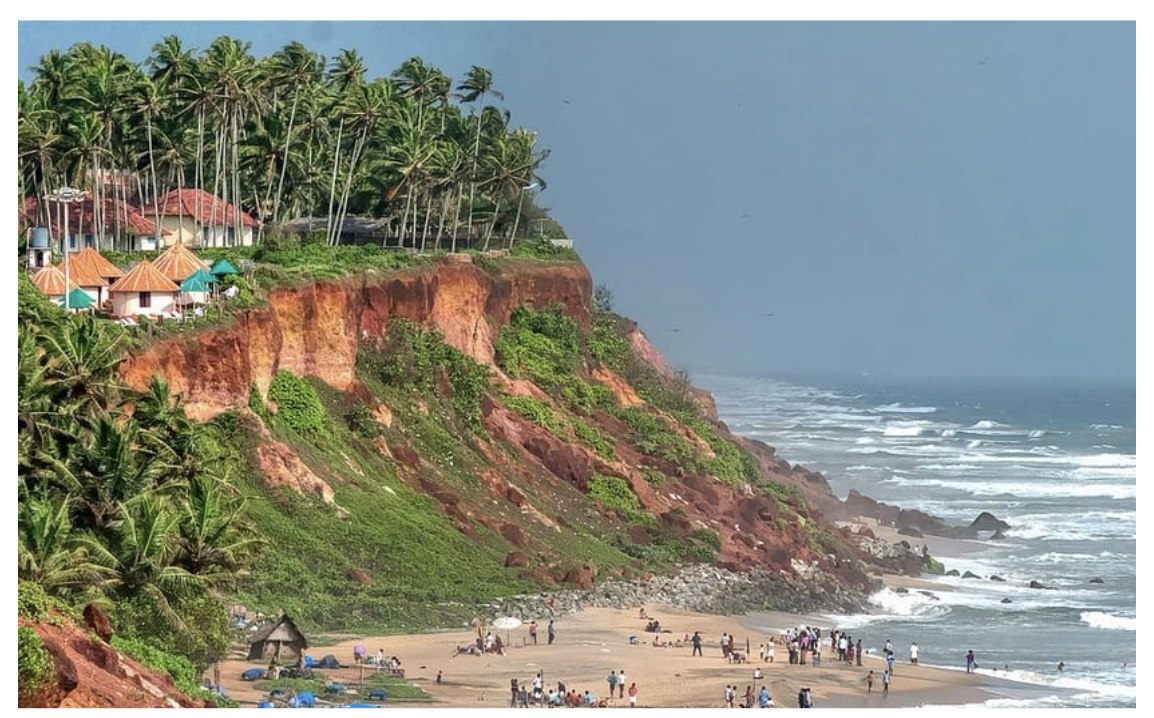GS Paper III
News Excerpt:
Varkala, located about 40 kilometres from Kerala's capital Thiruvananthapuram, a geological wonder is facing a significant threat of erosion.

Unique features of the cliff:
- It is a majestic 6-kilometre long, 30-metre high cliff parallel to the Arabian sea.
- Its formation is estimated to be 23 million years old.
- It is composed of laterite on top and softer layers of sandstone and clay below.
- This red cliff was designated as the 27th National Geological Monument of India by the Geological Survey of India (GSI) in 2014.
Threat of erosion:
- The soft layers beneath the laterite are susceptible to erosion by rainwater and wastewater seeping through cracks.
- This can cause sections of the cliff to cave in, posing a danger to visitors and nearby structures.
- The recent collapse near the Papanasam beach highlights this risk.
Uncontrolled activity threatening the cliff:
- Thiruvananthapuram District Collector ordered the demolition of a cliff section to prevent landslides from affecting the Bali Mandapam, where thousands congregate annually to conduct the ‘Bali’ ritual dedicated to departed family members.This sparked controversy as it damaged the geological heritage site.
- The legality of numerous cafes, resorts, and a religious structure built near the cliff is under question. Some structures including swimming pools are built very close to the edge, raising safety concerns.
- Environmentalists argue that unauthorized structures put undue pressure on the cliff, accelerating erosion.They fear this sets a precedent for prioritizing development over conservation.
Measures to Ensure Safety:
- Stability Study: The National Centre for Earth Science Studies (NCESS) and the National Centre for Coastal Research (NCCR) are conducting a stability study to assess the cliff's condition and recommend solutions.
- Drainage System: Implementing a proper drainage system to prevent water from seeping into the cliff's core is crucial.
- Traffic Regulation: Banning vehicular traffic on the clifftop path can help reduce weight on the edges and minimise erosion.
- Vegetation Reinforcement: Planting soil-binding plants and using coir mats can help stabilise the slopes.
Significance of the Cliff:
- Varkala cliff's significance goes beyond tourism.
- It serves as a valuable record of geological history of 23 million years , offering insights into ancient geological processes.
Way forward:
- Protecting this national geological heritage site requires a delicate balance between tourism and conservation efforts.
- Sustainable tourism practices that minimise the impact on the cliff are essential for Varkala's future.
|
National Geological Monuments
State-wise details of the geological heritage sites/ national geological
|


